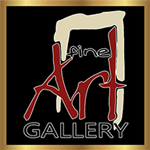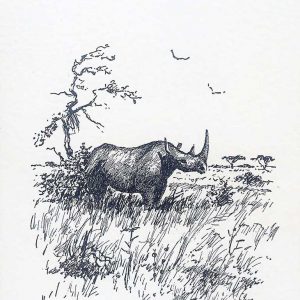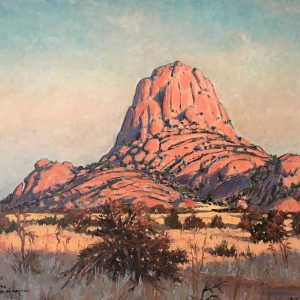
Helmut Lewin
About the Artist
Helmut Lewin
1899 – Schneidemühl, Germany
1963 – Windhoek
Resided to Namibia in 1926
Worked in oil and ink; subject matters: landscapes sections, trees, wildlife, portraits and
planes; style: realistic
Due to the early death of his father, he had to leave school and became a bricklayer to
support the family. With the age of 18 he became a construction drawer in an aircraft
business. The business owner noticed his talent and enabled him with a bursary to study
architecture and fine art under Walter Gropius at the Bauhaus in Weimar, Germany 1919 –1923.
He studied art under Felix Schwormstädt and Max Thedy and became his last master
student. In Weimar he met his wife, Eva, which has also been an artist. The young couple
moved to Schwerin and he became a lector at the Gewerbeoberschule, where he has been
much younger than most of his student which returned from war.
Due to the economic crisis after WWI he emigrated to Namibia in 1926 and settled in
Otjiwarongo and 1934 to Omaruru. The couple leased a hotel in Otavi in 1935. His wife
became ill and went for medical support to Germany and they had to give up the hotel again.
During the drought years he grabbed every available job. He painted the guest room at
Hotel Jacobi with many humorous scenes of everyday life. Same is known from Hotel
Usakos. Best known are his murals at Kölling – Hall in Omaruru. The murals are 3 m x 2 m.
It was planned that Lewin would follow his wife but due to the outbreak of WWII he hided in
the interior on several farms to prevent internment. A sarcoma forced him to give up and
he was interned at Andalusia, South Africa. Within the camp he produced some of his best
works. A series of portraits as well as topics of war and death. These works are today in the
Swakopmund Museum.
1944 he went as exchange of prisoners to Schwerin, Germany. His South African passport
saved him from the deportation of war prisoners to Siberia after the war. As a foreign he
was sent to the “ West “ and settled with his family in Pinnemünde, close to Hamburg. Three
years ( 1946 – 1949 ) he painted portraits of American soldiers and lectured at the University
of Hamburg.
The family returned in 1949 and settled in Omaruru, Swakopmund and Windhoek.
Since 1926 he designed several public buildings countrywide and served as a city architect
in Windhoek. He designed also the Coat of Arms for Windhoek.
Did numerous commissions for the Segelflieger – Club at Bitterwasser near Karibib,
where Lewin is buried as the cancer beated him. The farm “ Bitterwasser “ belongs to
Lewin ́s youngest daughter.
One of his students was Heinz Pulon. – He was the father of Eva – Maria Linsmayer, an artist.
Solo – Exhibitions:
First exhibition 1933 in Windhoek. – 1977 presented the Art Association Windhoek a joint
exhibition with his daughter Eva-Maria Linsmayer.
1952 Benseler Company, Omaruru
1980 Memorial Exhibition, AMA Gallery, Windhoek
Public Collections:
Art Association Heritage Trust, Windhoek, Swakopmund Museum
Commissions:
Frieze Hamburger Hof Hotel – Otjiwarongo, Kölling Hall – Omaruru








